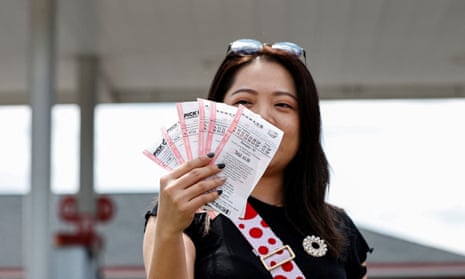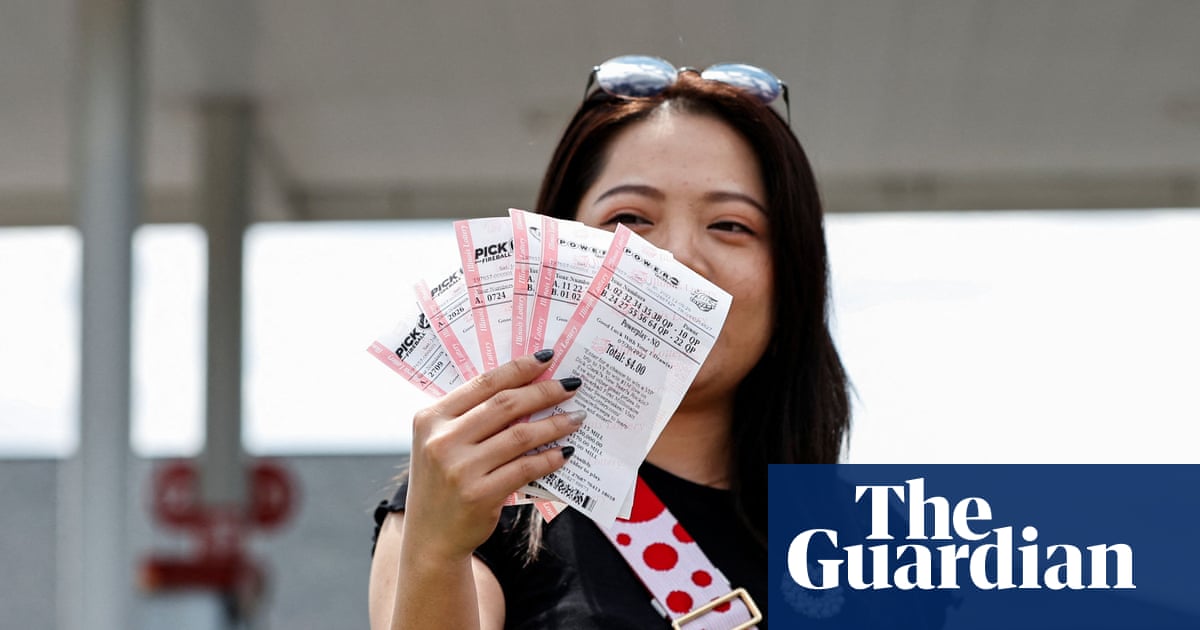The $1.1bn US jackpot: everything you need to know about the mega drawing
Why have there been so many $1bn jackpots recently? And how much do you actually win?

Millions of Americans are purchasing lottery tickets for the chance to nab the Mega Millions $1.1bn jackpot, the drawing for which takes place on Tuesday night.
If you are getting deja vu looking at the US headlines about the billion-dollar jackpot, it is not just you: this is the third billion-dollar jackpot in the last six months.
Here is more on why billion-dollar jackpots are becoming more common.
Wasn’t there a $1bn jackpot just a few months ago?
Yes. In fact, there were two $1bn jackpots in 2022 alone. Two people in Chicago won the Mega Millions $1.34bn lottery in July, while someone in California scored the $2.04bn Powerball jackpot in November. There have only been five jackpots that exceeded $1bn, including these jackpots seen last year, but there will likely be more in the future.
Why are there more $1bn jackpots?
Officials behind the lottery – which are technically run by state governments but are administered by private companies – have redesigned the lottery over the last several years so that there are more headline-grabbing, giant jackpots.
Both Powerball and Mega Millions changed their rules to lower the chances of winning the jackpot, meaning the pool of money keeps growing as drawings continue to produce no winners.
In 2017, Mega Millions modified its number-picking formula to give players a better chance of winning smaller prizes, but a lower chance of winning the jackpot. The chances of winning a jackpot went from 1 in about 258m to 1 in about 302m.
Gordon Medenica, the then-lead director of the Mega Millions Group, a consortium of states participating in the lottery, told the Washington Post in 2018 that officials were looking to combat “jackpot fatigue”, when players get tired of buying lottery tickets for smaller jackpots. They were also looking to attract “infrequent players” who only buy lottery tickets with a huge jackpot.
“Ultimately, these games, they’re all about the jackpots,” Medenica told the Post.
Another reason why the jackpots have gotten bigger: interest rates. Timed with the Federal Reserve raising interest rates to temper inflation, these rule changes lead to bigger prizes. Winnings, when taken as annuities, are invested into US treasury bonds, which are worth more when interest rates are high.
How much do you get by winning the jackpot?
Tuesday’s jackpot is worth $1.1bn, but exactly how much a person takes home is a bit complicated.
First, it depends on how the jackpot is taken. A winner can take the prize in $568.7m in cash. Then taxes will come into play. According to USA Mega, which calculates lottery winning earnings, federal taxes will take off about $200m from the prize. Then there may be more taxes, depending on the state in which the winner lives. California has no tax on lottery winnings, while New York has an 8.82% tax, meaning a winner gets a net payout of about $296.3m – a lot less than the $1.1bn prize.
If the prize is taken out in annuities, the total winnings could be as much as $694m with taxes.
Who runs the lottery?
Mega Millions is run by a group consisting of 45 states, Washington DC and the US Virgin Islands, all which sell lottery tickets. The same group participates in Powerball, with the addition of Puerto Rico.
While the government technically runs the lottery, largely on a state-by-state basis, it works with private companies to administer the game. These companies do everything from marketing and building software that chooses winners to printing the actual tickets.
States have been running government-sponsored lotteries for more than 50 years with the idea that the games would bring in big revenue for states. Public campaigns encouraging support for the lottery have touted that its revenue has supported essential public services, like education. But the reality is that states often use lottery funds to replace funds that were already earmarked for schools and move that money elsewhere, meaning schools largely have not seen boosts in funding from the lottery.
How often do people buy lottery tickets?
Estimates in the last several years have indicated that about half of Americans participate in the lottery at least once a year.
Critics of the lottery say that it is predatory toward poor Americans, who use a larger portion of their income on the lottery. According to a survey from Bankrate, a consumer financial service company, Americans making less than $30,000 who play the lottery spend 13% of their income on tickets. High-income earners spend less than 1% of their income on tickets.
A report released earlier this year from the Howard Center for Investigative Journalism at the University of Maryland showed that stores that sell lottery tickets are disproportionately located in lower-income communities.
